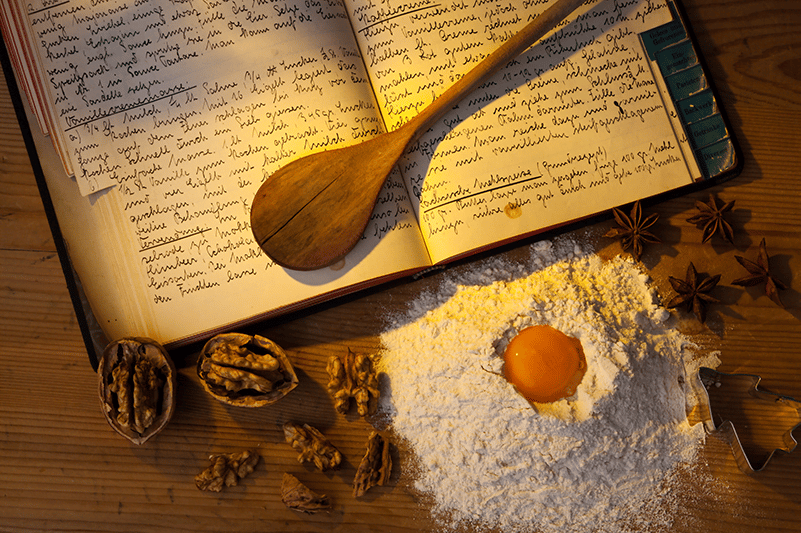A recipe for success
Self-publishing a cookbook might not be the first book genre you’d think of self-publishing. And indeed, since most cookbooks lean heavily on design and visual impact, self-publishing authors will have to work hard and hold themselves (or their team) accountable to get professional-looking results.
But at the same time, it’s an area of traditional publishing that’s often off-limits to authors that don’t already have a celebrity platform—so self-publishing a cookbook is a great way for authors to get their foot in the door.
Establish a following
But there’s a reason that traditional publishers are reluctant to hand out cookbook deals to just anyone. Readers are much more likely to buy a cookbook from an author with some kind of established platform. But this doesn’t mean you have to be Gordon Ramsay or Rachael Ray. For most aspiring cookbook authors starting from scratch self-publishing a cookbook, starting a cooking blog and amassing a modest following will go a long way. Even a small following will give you a base that can help you earn reviews and recommend your book to a wider audience.
If you run a restaurant or other local food business you can leverage that local success to create interest in your cookbook. Just make sure people know who you are. You could advertise at your restaurant, and in turn, mention your restaurant in your book and in marketing efforts. At the very least, make sure people know you are. You need your customers to know you’re publishing a cookbook, and your readers to know that you run a restaurant.
Find a niche
This is not too different from other book publishing. You want to find a corner of the market that has demand, but is not saturated. In many ways, this is doubly true for cookbook publishing. While a fairly generic romance or sci-fi novel might find its way into the hands of dedicated genre readers, your cookbook needs an audience that’s looking for something.
Your recipes should have a shared theme of some kind, whether it’s the type of food, set of ingredients, meals for certain occasions, or geared toward people on certain diets, you’ll need something that really calls to a specific group of readers. Without going too far, specific is good here. Vegetarian meals might be too general, while cold soups from northern Italy for people on the Keto diet might be too specific (although given how popular Keto is, you never know.) It is best to err on the specific side—a set of unrelated recipes won’t draw many readers if you’re not already well-known.
Plan your design
Unlike with other many other publishing projects, designshould be one of your first priorities when self-publishing a cookbook. Food52 writer Kendra Aronson suggests starting with dimensions and rough page count, and then with a basic content outline, before writing your recipes. Imagine how you want your book to look, and keep this in mind as you work on the details of your photos and recipes. This way, you’ll know how many photos and how much text you’ll need for each recipe.
When you take photos, make sure to use large, high-quality files. You want photos to look good once printed, without blurring or looking grainy. Other aspects of design are massively important here too—make sure your formatting is consistent, don’t use more than three fonts, and ideally, get expert help to make sure your overall design is visually engaging and professional looking. There are more design challenges for writing a cookbook than we can cover here in one blog post, so you’ll either need to do your research (the links here are a great place to start) or rely on an expert. Design is absolutely crucial here.
Learn how to write a recipe
If you haven’t done this before, you’ll quickly learn that just because you can cook does not mean you know how to write a recipe. Much of the cooking process might be muscle memory and instinct for you, but you’ll need to break everything down into understandable, quantifiable steps. Certainly if you’re not used to measuring exact quantities of ingredients, you’ll need to start. This may mean you’ll need to experiment with a dish you’ve already made hundreds of times. Remember, the best cookbooks will allow a reader with virtually no cooking experience to make your dishes.
One approach is to take a video of yourself cooking your dish, and watch it while pausing to write down every step. If you can take out frames with video-editing software, you can actually use those photos in your cookbook.
Finally, you’ll want to test out your recipes on readers to make sure they can understand each step. Ideally, don’t take their word for it—have family or friends make the dish itself from your recipe and see if it turns out the way you had in mind.
Self-publishing a cookbook is challenging in some ways that other self-publishing is not, but it’s also a great way to break into a segment of the market that is especially rigid when it comes to traditional publishing. And as always, a team of experts will help ensure a professional level of quality.




